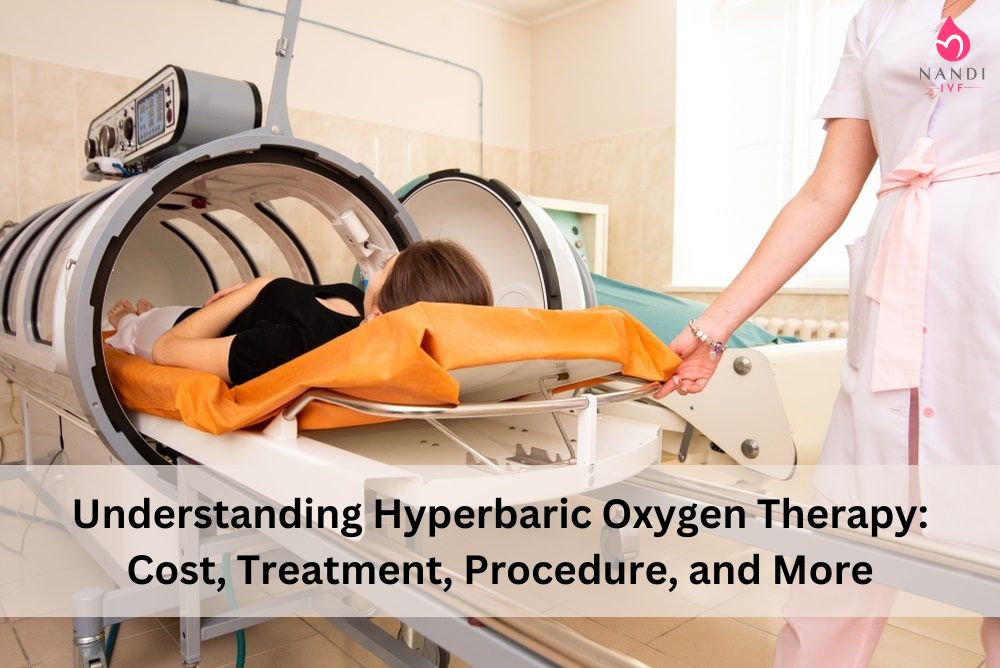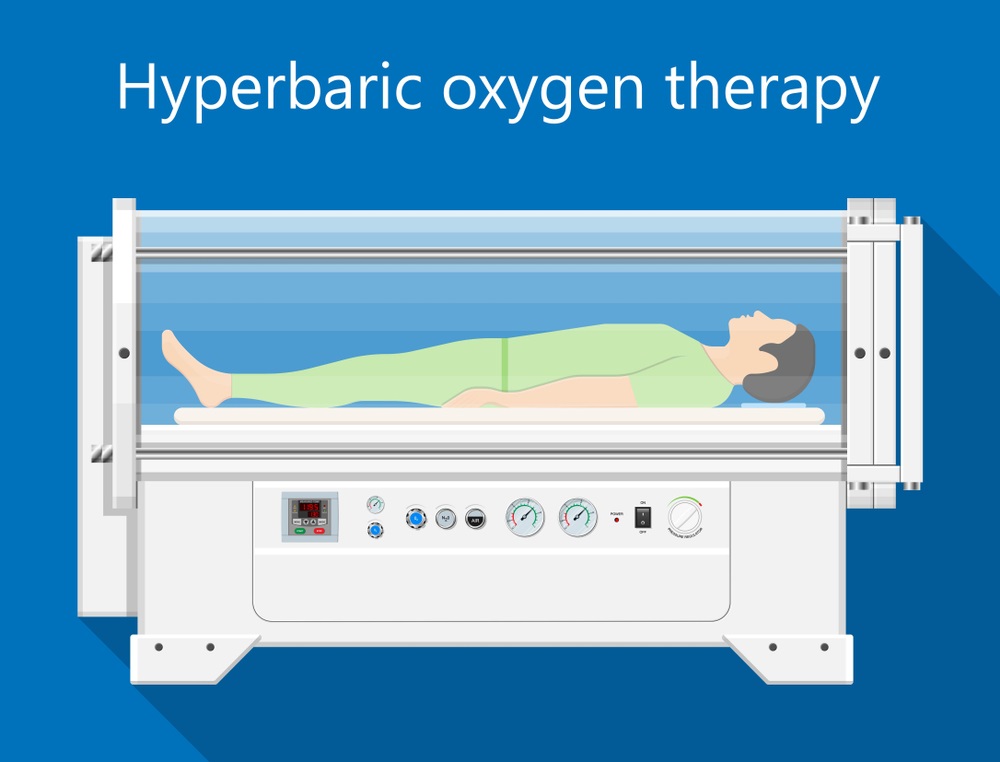

Hyperbaric Oxygen Therapy Cost and Treatment: HBOT has recently gained prominence, and clinicians actively utilise it across a wide range of medical conditions due to its efficacy and adaptability. HBOT entails administering 100% oxygen to patients at increased atmospheric pressure, facilitating greater oxygen dissolution in the plasma and tissues.
It has been demonstrated that this hyperoxic condition produced by HBOT may help in the treatment of a variety of conditions, including non-healing wounds, carbon monoxide toxicity, radiation injuries, and more. However, patients may be interested in the hyperbaric oxygen therapy cost before deciding if this treatment option is right for them.
Although some insurance plans continue to classify HBOT as an adjunctive or alternative treatment, a growing number are offering coverage, at least partly for conditions for which its efficacy has been established.
HBOT involves inhaling pure oxygen in a hyperbaric chamber. The patient lies in a specialised chamber pressurised to approximately 2 to 3 times normal air pressure during HBOT.
This pressurised oxygen environment permits greater oxygen uptake by the lungs than would be conceivable when inhaling pure oxygen at normal air pressure. The hyperbaric oxygen therapy cost can vary from Rs. 4000 to Rs. 10000 per session, depending on the protocol, number of sessions, and facility.
HBOT can transport this additional oxygen throughout the body via the blood. The therapeutic advantages of this increased blood and tissue oxygenation are evident.

Read Also: Comparing Tubectomy and Vasectomy: Which Option is Right?
From non-healing wounds to carbon monoxide poisoning and more, HBOT provides an alternative with significantly shorter healing periods and reduced hyperbaric oxygen therapy costs compared to conventional therapies alone. Let’s look at such medical conditions that HBOT can actively treat:
The use of HBOT can be beneficial in the treatment of wounds that have trouble healing, including diabetic foot ulcers, pressure sores, crush injuries, and wounds that are the consequence of radiation therapy or transplantation. HBOT helps problem wounds heal quicker and more completely than alternative therapies at a lower hyperbaric oxygen therapy cost by encouraging angiogenesis and supplying oxygenated blood flow to the region.
Hyperbaric oxygen treatment reduces carbon monoxide poisoning risk by shortening the body’s exposure to carbon monoxide. This technique helps CO-poisoning patients recover faster than standard treatment. Thus, patients can avoid lengthy hospital stays and lower hyperbaric oxygen therapy costs.
HBOT can lessen the severity of frequent radiation damage side effects, including necrosis, ulcers, and fibrosis of healthy tissues in cancer patients who are undergoing radiation therapy for the treatment of cancer. Additionally, this could speed up the healing process. At a cost comparable to traditional hyperbaric oxygen therapy, it expedites the release of growth factors. It encourages the development of new blood vessels in wounded regions.
By dissolving gas bubbles in the tissues and avoiding longer-term damage more swiftly than any other treatment option, hyperbaric oxygen therapy is also used to treat decompression sickness and air or gas embolisms. Patients can resume their usual activities sooner, which results in a cheaper hyperbaric oxygen therapy cost than a more prolonged recovery.
Read Also: 7 Steps to Getting Pregnant with Blocked Fallopian Tubes
A thorough understanding of the procedure and treatment process of Hyperbaric Oxygen Therapy (HBOT) is essential for recognising its potential advantages and effectiveness. Look at a typical HBOT session and the specialist equipment this therapy utilises.
Before the commencement of the session, the medical staff may actively request the patient to wear specialised attire or a gown. It may be necessary to remove the jewellery and electronic devices, among other items, that are susceptible to elevated pressure.
Entering the Hyperbaric Chamber: Patients are meticulously positioned within a hyperbaric chamber, of which there are two primary types: monoplane and multiple. Designed for a single patient, monoplane accommodations are generally more private and comfortable. Multiplace chambers are appropriate for more complex treatments because they can accommodate numerous patients or medical personnel. The treatment requirements and the healthcare facility determine the selected chamber.
Pressurisation: Upon entering, the chamber undergoes a progressive pressure increase, replicating the effects of submerging water. Patients may experience a sensation comparable to submerged diving or flying in an aircraft. Cleaning the sinuses and airways during this phase is crucial to prevent discomfort.
Breathing Pure Oxygen: With the escalation of pressure within the chamber, individuals inhaled pure oxygen via a breathing apparatus or covering. Under these conditions, the body can absorb considerably more oxygen than it normally would due to the elevated pressure.
Treatment Duration: Despite some variation, HBOT sessions generally last 60-90 minutes. Various medical conditions may necessitate multiple sessions spanning several weeks, contingent upon the patient’s response and the specific characteristics of the condition requiring treatment. A reasonable hyperbaric oxygen therapy cost can be actively used to complete this.
Read Also: Signs Ovulation is Over: You Need to Know If You Ovulated or Not
Hyperbaric Chambers: These are the heart of the therapy. In addition to being constructed to endure the elevated pressure, monoplane, and multi-place chambers feature transparent acrylic windows that afford patients a visual perspective throughout the procedure.
Oxygen Delivery Systems: Depending on the patient’s requirements and the chamber type, various delivery systems, including masks, hoods, and endotracheal tubing, are utilised to guarantee that patients receive oxygen in its purest form.
Monitoring Equipment: Medical personnel can closely monitor patients in multiple chambers using instruments such as pressure gauges and oxygen analysers to ensure the treatment’s safety and efficacy.
Read Also: The Importance of Sleeping Position After IVF: A Guide for Patients
Hyperbaric oxygen therapy has demonstrated its efficacy and adaptability in managing various medical conditions, including those mentioned above. By applying elevated pressure and concentrated oxygen, HBOT promotes healing in a manner that is unattainable via conventional methods alone. Although the hyperbaric oxygen therapy cost may appear excessive, many patients discover that the benefits of the treatment significantly outweigh this expense.
Nandi IVF provides HBOT conveniently for clients desiring a top-notch service. As one of the preeminent HBOT-providing services in India, Nandi IVF assists patients in conceiving affordably through the integration of cutting-edge IVF technologies and individualised attention. Contact us today to learn how our fertility and HBOT services can assist you in your journey to recovery and achieve your family planning objectives. Your satisfaction and health are our highest priorities.
Read Also: Understanding Asthenoteratozoospermia: Causes, Symptoms, and Treatment Options
Read Also: How to Increase AMH Levels Naturally: A Comprehensive Guide
Read Also: Understanding Sperm Cramps: Causes, Symptoms, and Treatment Options
1
2
3
4
5
6